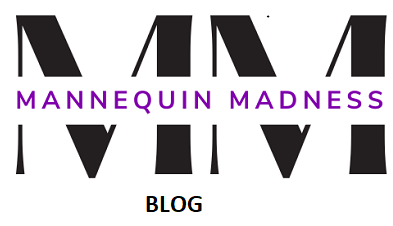Mannequins are so ubiquitous it’s easy to downplay their visual impact. That is, until something changes.
Mannequins have historically gone through trend cycles, according to experts. But they are in the midst of a very important evolution.

For years, they were seen as simply a way to display fashion apparel at its best, or as part of a larger merchandising strategy. Yet, mannequins aren’t simply a method of placing clothing on display. Retailers are beginning to recognize that body forms can help customers see themselves reflected in their brand and drive deep loyalty. Mannequins, it seems, can be a way for a company to reiterate brand values.
“Mannequins are storytelling vehicles,” said Adam Moon, executive creative director of Fusion, a creative design studio and the world’s largest mannequin producer, according to the company. They have evolved over the years, he said, “from kind of sky high, modelesque to becoming more realistic and representative of the customers that are shopping in our stores.”
And that transformation makes mannequins more important now than ever before, because it can signal what is important to a retailer. They have the ability to spark personal recognition in a client base, and thus serve as a way for customers to see themselves reflected in the shopping experience.
A new wave of forms
The history of mannequins is long, with one of the earliest discoveries found in King Tutankhamun’s tomb. The form was most likely used as a life-size model for royal dressmakers or to hold the King’s clothes and jewelry. In the 15th century milliners’ mannequins, which were a type of miniature fashion doll, would be sent to wealthy clients by dressmakers as a demonstration of the latest fashions. In 1835, an ironworker in France produced a wirework model, and by 1854 a tailor by the name of Alexis Lavigne filed the first patent for plaster molded mannequins. The form became prominent in Parisian department stores in the 1850s. The use of mannequins for merchandising in stores then spread to the U.S. and Britain.
By 2020, the global mannequin market size had grown to $1.2 billion and is expected to reach nearly $1.5 billion by the end of 2027, with a compound annual growth rate of 2.8%, according to a recent study. Male mannequins are the largest segment, with a share of about 30%.

Variations of the forms go in and out of style, with some decades offering realistic versions, while other trends lean on mannequins that are more abstract (who hasn’t walked by a store with headless mannequins in the window?). But, whatever is en vogue, mannequins have always been a display vehicle that helps boost sales. Experts interviewed said that the sell-through rate of apparel placed on mannequins is historically high.
Keep up with the story. Subscribe to the Retail Dive free daily newsletterEmail:Sign up
That’s because mannequins attract attention. They give customers visual clues as to what is stylish, they quickly show how an outfit can be put together and, at times, help shoppers discern how apparel will fit without the need to go into a dressing room.
And deciding to not illustrate body diversity may ultimately cost retailers. Having a variety of mannequins is a way that companies can do in-person marketing to an audience that may be used to shopping online, according to Joan Braatz, a freelance executive merchandiser with assortment optimization and product development experience with retailers including J.C. Penney and Macy’s. Do some people stand in front of a store and say, ”‘Well none of that stuff is going to fit me,’ and not walk in?” she asked, stating that retailers that show different types of bodies may win over shoppers and make them excited to go in stores.
That makes mannequins ultimately an important part of retail, according to Moon. “There’s no better and more effective way to show somebody outfitting or trends or the latest in fashion than it is through the vehicle of a mannequin.”
“There would be a tremendous amount of deliberation about what we put on the mannequins, because we knew it was the most powerful space in the store,” Braatz said. Working with mannequins, she said, “tells the story, it sets the tone — especially at the beginning of new seasons. That mannequin collateral is really valuable.”
It also means that retailers are making conscious decisions about what percent of their store square footage can be dedicated to the forms as a marketing vehicle. Braatz points to Target, which she said has made a concerted effort with store merchandising and redesign in the past few years. “When you think about Target, that sales per square foot has got to be huge. So for them to pull off a table to put a set of three mannequins in the middle of a floor — I think they really are making a commitment to step up their merchandising efforts.”
Source:https://www.retaildive.com/news/model-behavior-how-mannequins-display-retails-brand-values/607969/
